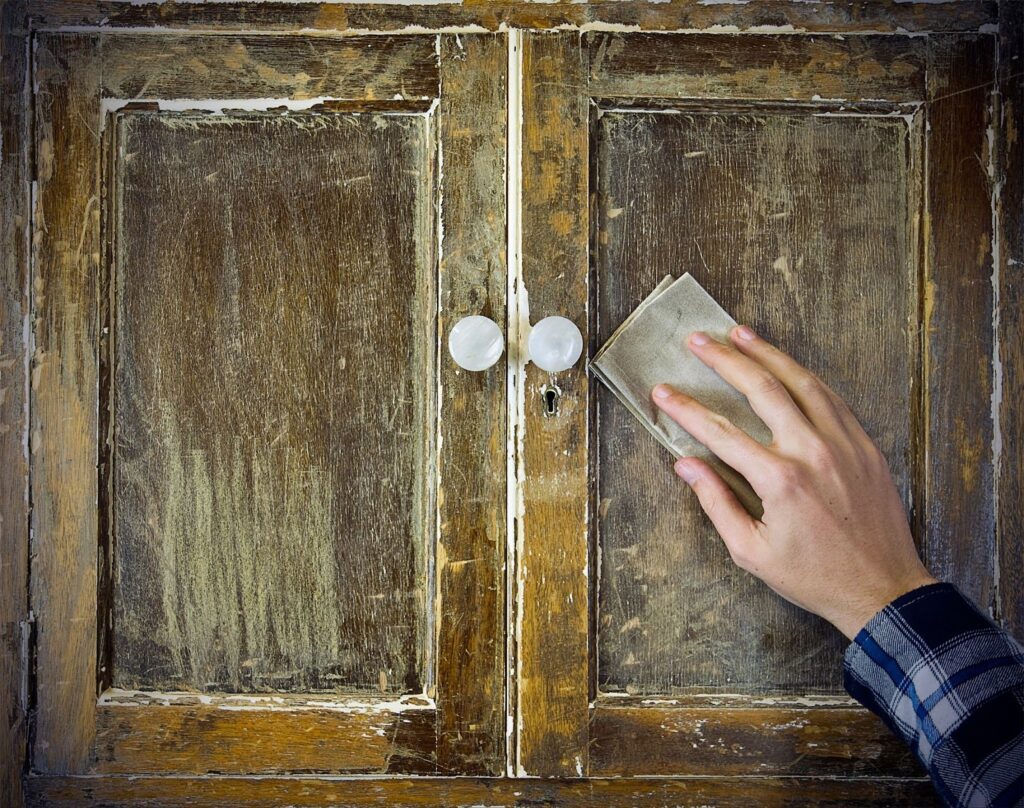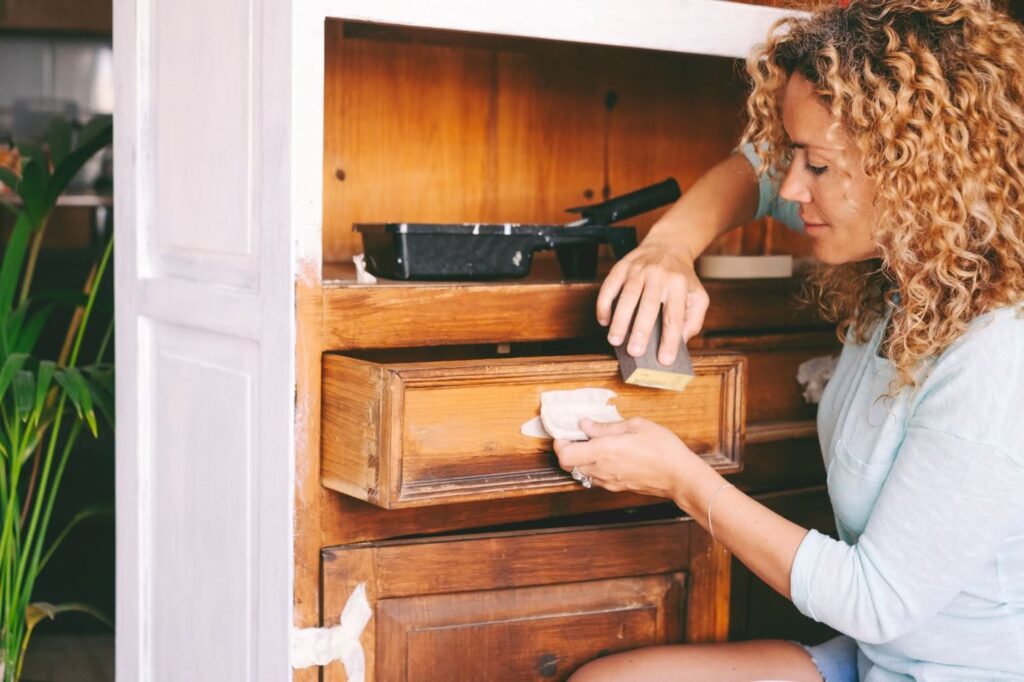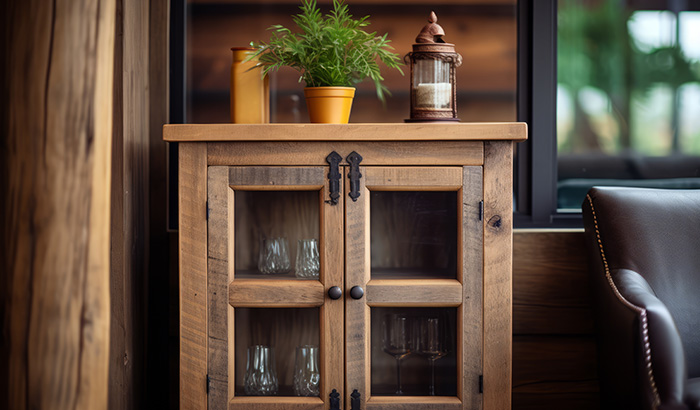Restoring antique cabinets is more than a renovation task; it’s a journey into reviving history and infusing it with modern functionality. Antique cabinets are not merely storage units; they are also storytellers of the past, each with a unique narrative and charm.
The beauty of antique cabinets lies in their ability to add character and warmth to your kitchen. However, over time, they may lose their luster and functionality. Cabinet restoration allows you to preserve the historical essence of these pieces while seamlessly integrating modern amenities. This blend of old and new ensures your kitchen remains a functional, inviting space without losing its historical charm.
The charm of antique cabinets
Antique kitchen cabinets are a testament to a bygone era’s craftsmanship and style. The unique appeal of antique cabinets lies in their distinct character, each piece telling its own story through intricate designs, time-honored construction methods, and the natural patina that only comes with age.
A window to the past
Antique cabinets bring a sense of history into your kitchen, transforming it into a space that transcends time. They remind us of the days when skilled artisans made cabinets by hand. The dovetail joints, hand-carved details, and original hardware of these cabinets are the marks of a craftsman’s dedication and skill.
Adding warmth and character
Incorporating antique cabinets into your kitchen design adds an unparalleled warmth and charm that newer, mass-produced cabinets sometimes lack. The rich textures and colors of the wood, mellowed and deepened over the years, bring a cozy, lived-in feel to the heart of your home. Whether your style is rustic, traditional, or eclectic, antique cabinets can be the centerpiece that ties your kitchen’s aesthetic together.
Preserving original craftsmanship
Preserving original craftsmanship is at the heart of restoring antique kitchen cabinets. This process involves a deep respect for the cabinet’s history and integrity. Each restoration should honor the piece’s past. The aim of a quality antique cabinet restoration is to rejuvenate these cabinets — to enhance their beauty while keeping their distinct character.
In preserving and restoring these valuable pieces, the essence of traditional craftsmanship is kept alive, allowing these timeless treasures to continue enriching our homes.

Assessing the condition of your antique cabinets
When it comes to restoring the timeless beauty of antique cabinets, the first step is a thorough and careful assessment of their condition. Understanding the current state of your antique cabinets is necessary to determine the appropriate restoration approach.
Evaluating structural integrity
Start by examining the overall structure of your antique cabinets. Check for any signs of damage or wear that could affect their stability and functionality. Look closely at the joints and corners for any looseness or gaps, as these are indicators of structural issues. It’s important to ensure that the cabinets will still function after restoration.
Identifying repair needs
Next, focus on identifying specific repair needs. This includes examining the wood for any cracks, splits, or areas of rot. Pay attention to the surfaces and finishes, noting any areas where the paint or stain has worn away, leaving the wood exposed. These areas detract from the aesthetic appeal and might lead to further deterioration if not addressed.
Assessing the hardware
The hardware on antique cabinets, such as hinges, knobs, and pulls, often tells a story of their own. However, over time, these pieces can become worn or dysfunctional. Assess whether the hardware needs cleaning, polishing, or replacing. Remember, the goal is to maintain the cabinet’s historical authenticity, so any replacements should be in keeping with the cabinet’s era and style.
Importance of a careful assessment
A careful assessment is vital to maintain the integrity of your antique cabinets. It allows cabinet restoration professionals to create a tailored restoration plan that addresses all issues without compromising the cabinet’s original character.
Choosing proper restoration techniques
Choosing proper restoration techniques is vital to honoring a cabinet’s history while refreshing its appearance. A good approach to restoring antique cabinets involves a blend of traditional craftsmanship and modern techniques. Each piece should be beautiful and function well in a contemporary kitchen.
Stripping and sanding
The restoration process often begins with stripping away old paint or varnish. This step uncovers the original wood, which allows professionals to assess its condition and prepare it for refinishing. Stripping should be done carefully to avoid damaging the wood. This is especially important for antique cabinets, where the wood itself is often a highlight of the piece.
After stripping comes sanding. Sanding smooths the wood’s surface and prepares it for the new finish. Professionals should take great care during sanding to preserve any unique markings or features that contribute to the cabinet’s antique character.
Refinishing techniques
Refinishing is where the true transformation happens. The best restoration companies use techniques that enhance the natural beauty of the cabinet while providing durable protection. Finishes range from stains that highlight the wood’s natural grain to paints that offer a more significant change in appearance. The choice of finish depends on the cabinet’s style and the desired look for your kitchen.
The role of color
Color plays a significant role in both preserving and updating antique cabinets. For kitchen cabinets with historical significance or intricate craftsmanship, we often recommend colors that enhance their antique look. This might mean choosing a stain that brings out the wood’s richness or a paint color that references the cabinet’s original era.
For those looking to give their antique cabinets a more contemporary edge, explore modern color palettes. This could mean opting for bold, trendy colors or neutral tones that align with current kitchen design trends.
Balancing preservation with modernization
While some cabinet restorations are about keeping a cabinet’s antique style, some opt for merging a cabinet’s history with modern elements. Deciding whether to maintain the original finish of your antique cabinets or update them for a contemporary look is a deeply personal choice.
Expert guidance can be invaluable in navigating this decision. Cabinet restoration professionals can help you plan for an outcome that honors the cabinet’s historical significance while integrating it beautifully into a modern kitchen setting — a perfect mix of old and new. Experienced professionals will know which techniques are reversible and which ones are not, which will help you decide which steps you want to take to modernize your cabinets.

Modernizing while preserving history
Modernizing while preserving history is an artful balance in the realm of antique cabinet restoration. The key is to update your kitchen with contemporary conveniences and styles while ensuring your antique cabinets’ essence and charm remain intact. This approach is about embracing the new while honoring the rich history and character that antique cabinets bring to your home.
Integrating modern conveniences
Modernizing your kitchen doesn’t mean you have to compromise on the historical value of your antique cabinets. One way to achieve this is by incorporating modern functional inserts that enhance usability without altering the cabinet’s exterior. For instance, installing pull-out shelves, lazy Susans, or modern drawer organizers inside your cabinets significantly improves their functionality while keeping the external antique look unchanged.
Updating hardware
Hardware updates are a subtle yet impactful way to add a touch of modernity to your antique cabinets. Replacing old knobs, pulls, or hinges with contemporary designs can instantly refresh the look. However, it’s crucial to choose hardware that complements the style and era of the cabinets. It’s a good idea to use hardware that nods to the cabinet’s original period but has a modern twist so the new additions blend seamlessly with the old charm.
Integrating modern appliances
Incorporating modern appliances into a kitchen with antique cabinets can be challenging, but when done right, it creates a harmonious blend of old and new. Choose appliances with a design aesthetic that complements the antique cabinets, such as those with a retro look or sleek, minimalist lines. The key is to ensure that these modern elements do not overpower the antique features but rather enhance the overall kitchen design.
Balancing functionality and preservation
Balancing functionality and preservation is the true art of modernizing antique cabinets. It’s about ensuring that your kitchen meets your modern needs while still celebrating the history and craftsmanship of your antique cabinets. With the right approach, your kitchen becomes a beautiful testament to both the past and the present, blending utility with the timeless charm of these classic pieces.
Revitalize your kitchen with Allen Brothers Cabinet Painting
At Allen Brothers Cabinet Painting, we understand that antique cabinets are not just furniture; they are a piece of history, a story waiting to be told in your modern kitchen. When you call on us to update your cabinets, you’re calling on a speedy, reliable service that’s here for you.
We invite you to experience the transformation that Allen Brothers Cabinet Painting can bring to your kitchen. Let us help you breathe new life into your cabinets. Contact Allen Brothers Cabinet Painting for your cabinet restoration needs, and let’s embark on this journey together.

